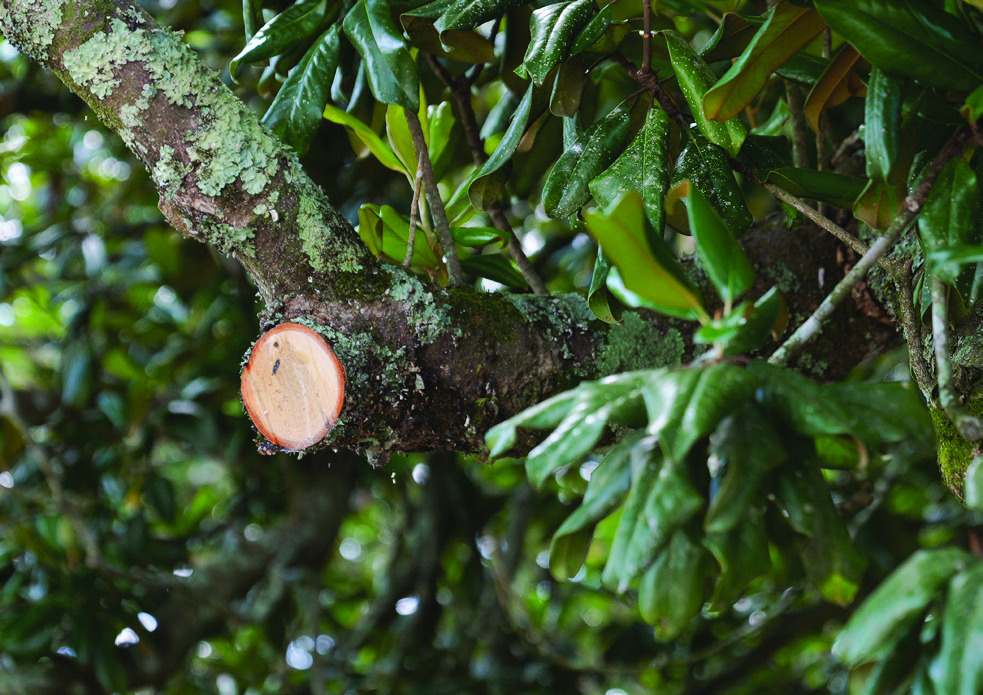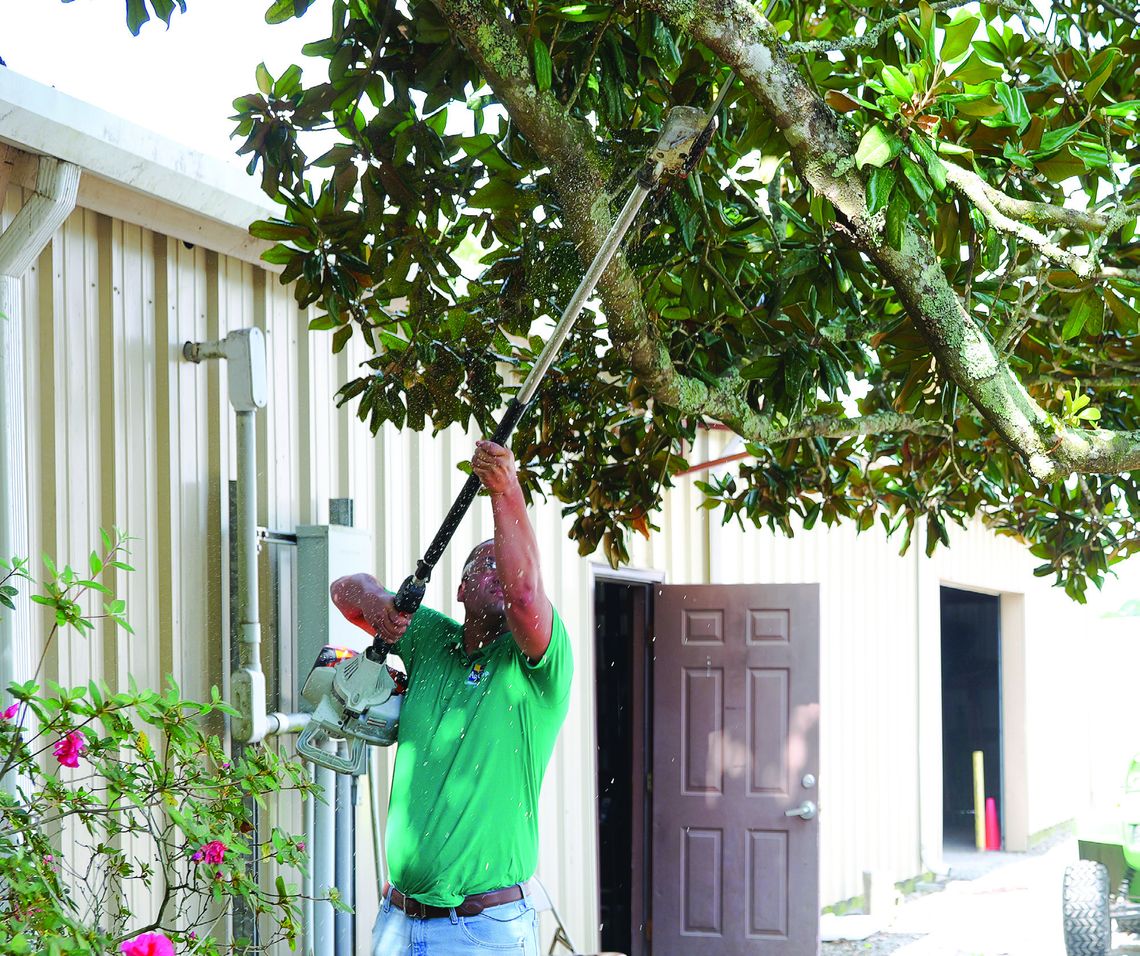Get it growing
If you find yourself needing to remove a tree branch, there’s a right and a wrong way to do it.
The wrong way can unnecessarily harm your tree — and even you! The right way gets rid of the problematic branch while keeping both you and the tree safe.
So, where to begin? First, make sure the branch you want to remove really needs to go right now.
Cutting off branches is stressful for trees, and that stress is only magnified in the hot summertime. That’s why most trees — except fruiting and flowering species — should be pruned during late winter or very early spring.
If your goal is improved aesthetics or better airflow, hold off on pruning for now. But it’s OK to remove the four Ds — dead, dying, diseased or damaged branches — any time of year, said Damon Abdi, LSU AgCenter assistant professor of landscape horticulture.
Abdi recommends using the three-cut method to remove these branches. This technique limits damage to the tree’s bark, which aids the healing process, and promotes safety. It involves making a cut from underneath the branch and then from the top before cleaning things up.
Step 1: Notch the underside of the branch At least 2 inches away from the branch’s junction with a larger limb or the trunk, make an upward cut from the underside of the branch. Don’t cut all the way through. Stop about one-third to one-half of the way up.
This notch plays an important role.
“When the weight of the branch starts to collapse and fall, it’s not going to peel the bark all the way down the tree, which is going to protect the tree and its longterm health,” Abdi said.
The notch also makes it easier to predict where the branch will fall.
Step 2: Make the top cut Place your saw on top of the branch 4 to 6 inches down-branch from the notch. Cut downward until the branch snaps at the notch and falls to the ground.
Step 3: Trim the stub You’ll be left with a jagged stub at this point. Don’t cut the whole thing off. Trim just enough to give it a flat edge.
“You want to give it plenty of space,” Abdi said. “You don’t want it to be completely flush with the trunk.”

When trimming the stub, be sure to leave a bit on the tree. Do not cut it flush with the trunk or limb. (Olivia McClure/LSU AgCenter)


